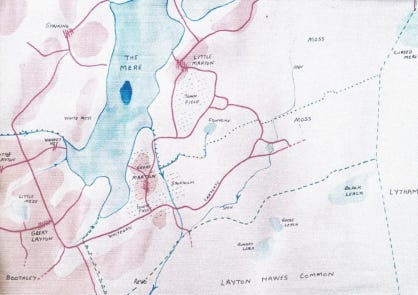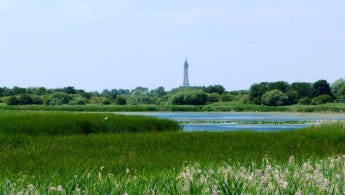Marton's quest for a local church in 1625
Marton historian Philip Walsh looks at Marton Mere, the lake which divided the parish of Poulton-le-Fylde 400 years ago.
As a lad in the late fifties and early sixties, I used to enjoy walking from my home on Lawson Road, Marton with family to Staining. The route was generally across the fields, bypassing the allotments and Royal Lancashire Showground, circumnavigating Marton Mere, avoiding “the tip” then taking a rough track past Nook Garage towards the village.
We usually visited our friends Fred and Phyllis Houghton who had built a bungalow together with newsagents, grocers, off-licence, laundrette and later a ladies hairdresser for their daughter Patricia, on a prominent site in the expanding village. Prior to their move to Staining in 1959, the Houghton’s had lived in a prefab on Lawson Road following Fred’s demob from the Army. Fred had owned Blackpool Plastering Company, and their sons Eric and Stan had established their own building firm.
The area has very much changed; the prefabs were demolished many years ago, trees have grown on the fields which were used for car parking during the show, Blackpool Zoo was built on the showground together with the Herons’ Reach Golf Resort and Village Hotel. The Haven Marton Mere Holiday Village approached from Mythop Road has expanded on the south side of the Mere, also housing accessed from Cornwall Place once the site of Bleazard’s Mushrooms. The field where the temporary prefabs once stood is covenanted land given to Blackpool Corporation (now Council) by William Lawson in 1938. The covenant stipulated that the land could not be built on.
As a pupil at Stanley Junior School, our headmaster, Mr P P Hall was a keen local historian, and he would take classes on walks around Marton Mere. He would explain that following the Ice-Age, the Mere was considerably larger. Anciently, some 2½ miles long by ½ mile wide*; it had three water courses emptying into Lytham Pool, Skip Pool and the Black Pool. He would point out the contours of the land showing the basin of what he believed was the original size.
*Sizes do vary depending on whether numerous pools are taken into consideration.
A Five Mile Walk to Worship
Exactly four hundred years ago, in 1625, the residents of Marton were discontented. Although there was an active church community, they lacked a church of their own. For years, they endured a five mile journey to Poulton-le-Fylde over poorly constructed roads and tracks. This journey was particularly challenging during winter months due to the marshy conditions. Consequently, they petitioned the parliamentary commissioners to establish their township, along with "Layton, Layton Rakes, and Blackpool," as a separate parish.
The request did not receive a favourable response, and it took 175 years before a church was built in Marton. The primary issue was the mere which divided the large Poulton parish, stretching from the area later known as Fleetwood to the boundary with Lytham at Squires Gate and Division Lane. Bispham and Lytham were separate parishes, and people in Marton would worship at either church if they had a connection.

Moving forward a generation, another petition was raised by the people of Great and Little Marton at the Quarter Sessions in 1655. It was for permission to erect a bridge over the outlet from Marton Mere to the sea, having been ‘many tymes in the winter debarred from the benefit of the Marquett at Preston at the most beneficiall and usual tymes of commerce the highway being in the winter so soft by reason of the slitch and water that it is not passable but with great danger of loss or spoiling their goods.’
Keep reading with a 7-day free trial
Subscribe to The Blackpool Lead to keep reading this post and get 7 days of free access to the full post archives.



